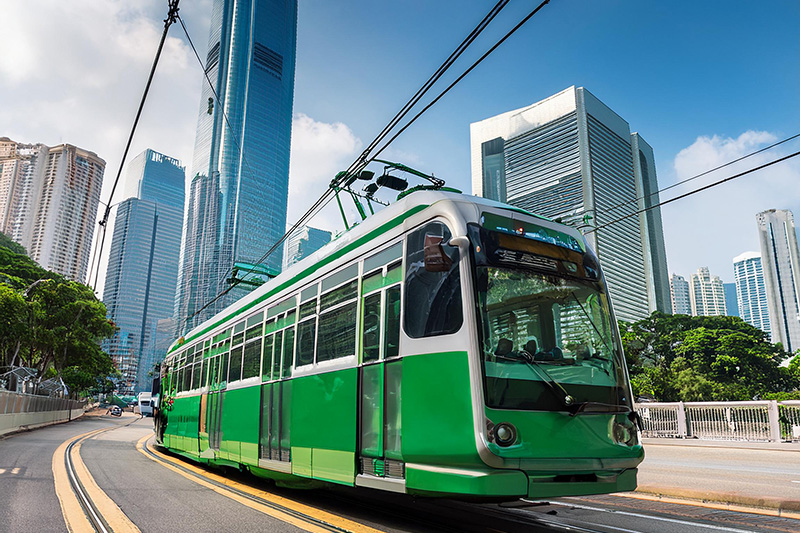
Imagine a tram, with its iconic hum and metallic rhythm, navigating the tracks of an early 20th-century city. Since its inception in 1904, the tram has been a steadfast symbol of consistency and reliability, transporting countless people to their destinations—a fitting metaphor for the evolution of time and attendance systems.
The tram has witnessed remarkable transformations over the years—from the installation of air conditioning to modern redesigns of its interior—catering to the demands of comfort and efficiency. This spirit of adaptation parallels the developments in workplace management, especially concerning how employers track time and manage their workforce.
In the early years coinciding with the tram’s introduction, businesses used mechanical punch clocks for employees to clock in and clock out. Each stamp on a time card signified the start or end of a shift, a process similar to the tram’s scheduled stops along its journey. The simplicity of this system was effective during that era, but as businesses grew and diversified, the need for more sophisticated time attendance management methods became apparent.
Enter the age of digital transformation, where the concept of ‘clocking in’ and ‘clocking out’ has catapulted from a simple mechanical punch to a sophisticated digital action. Time cards are now digitalized, and the process is automated, reducing errors associated with manual entry. This modernized system tracks employee hours with precision, leading to a more accurate payroll and better compliance with labor laws.
Time attendance systems have become integral tools for both large and small businesses. Making sure that employees clock in and clock out at the prescribed times ensures that labor resources are used effectively. Moreover, the utilization of time attendance software provides a transparent and fair system that supports both the employer’s and the employee’s interests.
Although today’s time attendance systems are much more advanced than the tram’s early mechanisms, there is a clear lineage. The roster, which dispatched trams and their drivers, has found its successor in today’s digital schedules. The modern roster must manage not only shifts but also vacations, sick leaves, and unexpected absences. Similarly, it often integrates with the time attendance platform to streamline the scheduling process.
Accurate roster management is crucial to maintaining a thriving business. Just as the tram requires a precise timetable to function, a company needs an accurate roster to ensure all positions are properly staffed. Employees are made aware of their shifts well in advance, they clock in and clock out according to schedule, and the whole operation runs as smoothly as those early trams along their tracks.
Digital time cards, too, have become central to the modern time attendance ecosystem, providing an immutable record of work hours tied directly to the payroll system. They’ve eliminated the physical wear and tear—and the opportunity for time theft—that came with traditional time cards. Today, an employee can clock in and clock out with just a smartphone or an RFID tag, and that event is securely logged in the cloud.
To successfully manage a team, managers must be adept at both time attendance and roster organization. The rise of remote work and flexible schedules means these systems have to accommodate an even greater array of complexities. Employees may clock in and clock out from different locations, and the digital time card must accurately reflect this. The roster needs to adjust in real-time, ensuring that every shift is covered and that the company can adapt to the dynamic business landscape.
And as our pace of life accelerates in tandem with technological advancements, so does the need for more efficient management of time and attendance. Employers need to be able to trust their teams to reliably clock in and clock out without direct supervision, and employees need a system that acknowledges their flexibility and autonomy.
Hence, the modern workforce demands an intelligent, adaptable system that can handle the nuances of today’s diversified working environment. With employees clocking in and clocking out at unconventional hours, the digital roster and time card system have to be accessible 24/7, highly secure, and user-friendly to support this flexible model. The roster, in many ways, has become a living document, constantly being updated and optimized to reflect the actual working patterns of the team.
In conclusion, as we take a step back to appreciate the evolution of our work life through the lens of the humble tram, it’s clear that the tools we use to manage our time and attendance have traveled a long way. And speaking of advancement, a noteworthy development in this area is Clockgogo, a cloud-based workforce management solution utilizing mobile technology and biometric recognition to provide a cost-effective solution for time attendance. It takes ‘clocking in’ and ‘clocking out’ to the next level by offering features such as GPS positioning, facial recognition, and a seamless integration with payrolls. Time cards have transformed into digital logs that not only provide real-time data but also insights and analytics to optimize the workforce. With Clockgogo, the roster becomes an intelligent, agile instrument to drive business efficiency, ensuring the legacy that started with the historic trams continues into the future with unwavering precision and adaptability.
About Clockgogo
A cloud-based time attendance management system aims to make time tracking easier and more effective. Powered by the patented 4-level verification technology, Clockgogo provides HR staff with a peace mind upon time card management.
Fake GPS, buddy punching, hefty hardware costs, clumsy installation will not be problems anymore. With flexible and user-friendly roster planning and reporting capabilities, calculation of work hour, overtime and other time attendance results is just a click away.
Time card and time attendance results can also be retrieved through API for third-party HCM / HRIS / HRMS / HR system integration (e.g. Workday, Peoplesoft etc.).
Since its launch back in 2016, Clockgogo has already processed more than tens of millions faces and is widely adopted among global brands.

